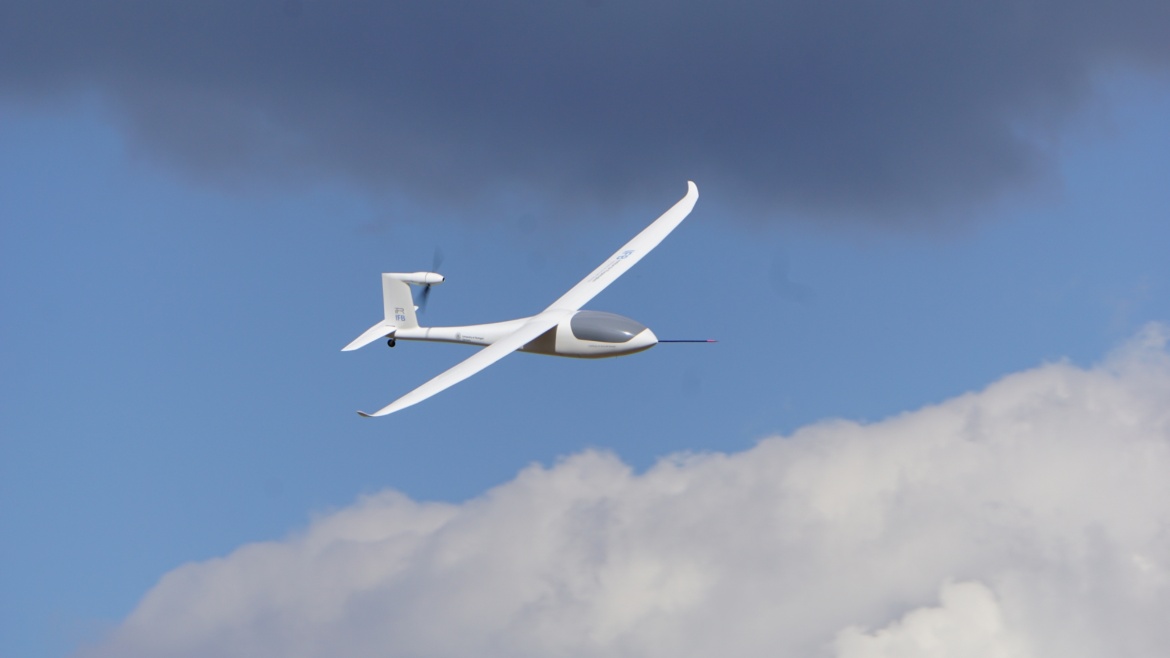
Using gliding as an example, the researchers at the Institute of Flight Mechanics and Control (IFR) at the University of Stuttgart hope to gain insights into how air traffic can be made more eco-efficient going forward.
The potential of artifi cial intelligence (AI) is extending the spectrum of methods everywhere, including the field of flight control. “We critically examine these new methods, but without simply following the popular wave blindly. Instead, we try to place AI within the classical systems theoretical context,” explains Prof. Walter Fichter, head of the IFR. His team includes Pascal Groß and Stefan Notter, two scientists who are working on this aspect as part of the TakEOF research project, which stands for “Tactical Energy Optimized Flying”. A higher degree of automation up to autonomous flying should contribute to the goal of more environmentally friendly aviation below the cloud ceiling.
Currently, contributions on automation are coming from two different fields: systems theory and computer science. “We belong to the first group, but are actually users,” says Fichter. Specifically, algorithms are being developed at the Institute for 'Urban Air Mobility Vehicles' - better known as air taxis - such as the Volocopter and City Airbus. According to Fichter, the questions and problems are similar, whether below the cloud ceiling or in space.
There are good reasons why gliding was chosen in the end: this kind of flying is multi-layered, requires a careful consideration of the available options, experience and feeling. Everything revolves around thermals and their intelligent use. “Pilots have to perform at a high level. But gliding is even more demanding than motorized flight,” says Fichter. “This is why we reached the conclusion that the relevant parameters would serve as a suitable benchmark across the board,” who designed and worked on the project, which was funded by the Federal Ministry of Economics and Energy (BMWI) for two years.
Methods find their niches
As always with new methods, the question as to where AI fits in also arises for flight mechanics. “We are currently investigating how classical control systems engineering can be usefully combined with methods from the field of artificial intelligence - in particular machine learning,” says Notter. Fichter emphasizes the necessary openness in the result. As he knows from experience: “control systems engineering originated in the 1940s and has subsequently been subject to many waves of new methods. At first, these were always viewed critically, but over time they have always found their appropriate applications and niches.”

Of course, the IFR hopes to be able to successfully fill such a niche with these new methods, especially since initial results are available that look promising, at least within a certain circumscribed field of application. “We find it exciting to automate the competitive gliding scenario, which in some aspects resembles a board game, using methods of machine learning,” says Notter. “We are cautiously optimistic that this process will achieve what a good human pilot is capable of.”
We find it exciting to automate the competitive gliding scenario, which in some aspects resembles a board game, using methods of machine learning.
Stefan Notter, Research Assistant at the Institute of Flight Mechanics and Control (IFR)
Even approaching the mathematical optimum, he goes on, presents a real challenge. “Using classical methods, we can calculate optimal behavior in a scenario in which we know all the boundary conditions and have all the information, with difficulty for sure, but also very well, because we know how a plane behaves in calm air conditions.” However, if there are additional environmental factors, for example in the form of an updraft distribution, which are not known at first, one can still approach an optimal solution using Reinforcement Learning (RL), a form of machine learning. Notter explains: “This optimal solution is based on the fact that we know exactly what the environment looks like beforehand. And although our agent, which has been trained using RL, does not know this, it is still able to move intelligently within this environment, which is initially unknown to him, based on its total collected experiences.” The scientists at the IFR consider this form of AI to be a suitable method “because we are dealing with an unknown airspace, which we can hardly model beforehand”.
Mass data reconciliation
Huge amounts of data is required to be able to predict under which conditions updrafts will occur. Because glider pilots record all their cross-country flights and the data is accessible, Notter and Groß are able evaluate over 26,000 glider flights with over 110 million positional measurements: “The aircraft’s precise position is measured every few seconds.” In addition to this data, the scientists also have access the data of the German Weather Service, which is often received on an hourly basis. “That alone amounts to several gigabytes a day.” These data sets, which often refer to different coordinate systems, must be reconciled with each other by software programs. A tricky business. But that is precisely what the Institute does best: “We are very algorithm-oriented, but we do not only design the algorithms. It's about implementing them so we can test them.”
An application has already been submitted for a follow-up project, which involves direct practical implementation: Particularly in disaster operations, such as forest fi res, an aircraft’s energy balance is important for keeping the aircraft in the air for as long as possible. “The trick is that several unmanned aerial vehicles should complement each other,” says Notter. It is already clear that using updrafts saves a lot of fuel. “So the unmanned system can carry much more payload - or fly much longer.”
Susanne Röder
Prof. Walter Fichter und Stefan Notter
Institute of Flight Mechanics and Control (IFR)
Teamsite of the IFR


